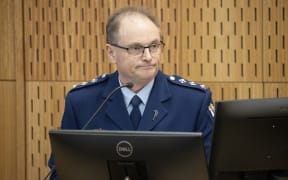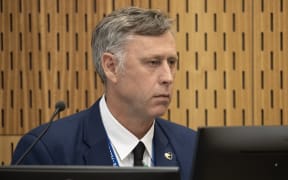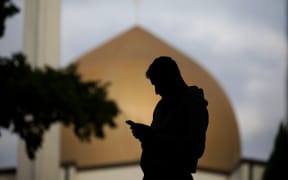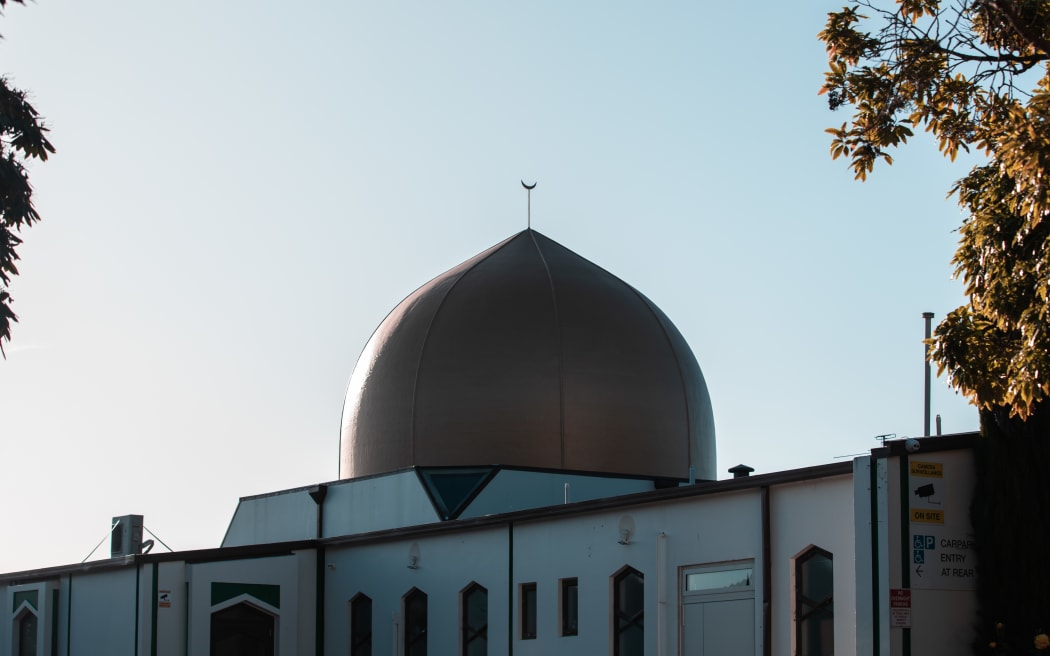
Christchurch's Al Noor Mosque. Photo: RNZ / Samuel Rillstone
Warning: Some content of this story may distress some readers
The horrifying scene which confronted emergency services at Al Noor Mosque on the day of the Christchurch terror attack has been described by a member of the Armed Offenders Squad.
And a detective superintendent has said he wished he handled a situation better when he mistook a delayed feed of the terrorist's livestream as live.
The inquest into the attacks on Al Noor Mosque and Linwood Islamic Centre, where 51 worshippers were murdered on 15 March 2019, earlier heard from a senior police communicator who admitted that a call containing vital information about the terrorist's plans should have been treated with the highest priority and shared widely among the police.
On Monday afternoon, an AOS member, who has name suppression, told the court his shift had finished for the day when he was alerted to an active shooter event.
He quickly drove back to the Christchurch Police Station, put a vest over his regular clothes, grabbed his weapons and headed out with three other AOS members.
They were tasked straight to Al Noor Mosque, but diverted a handful of times as new information came over the radio.
In order to get back to Al Noor Mosque after hearing information that more shots had been fired at the mosque, the AOS member used a member of the public's car to drive there.
Parking a distance away from the mosque as to not cause distress and confuse people, he ran towards the mosque, telling people to go inside and stay put unless told otherwise.
It was here the AOS member said he started encountering a number of people on the footpath who appeared deceased.
About 2.15pm, the AOS member said he arrived at the mosque, seeing bodies in the main corridor.
He also noticed a shotgun with white writing all over it laying on the ground.
Moving down the hallway, he said he saw magazines and "dozens" of spent rounds.
Entering the main prayer room, he said the floor was "littered" with more spent rounds, but no bodies could be seen straight away.
However, "piles of bodies" were soon seen in each corner of the room.
The AOS member said when he and other AOS members identified themselves as police, a number of people started moving and hands came up.
He then advised St John Ambulance staff that urgent medical assistance was needed for victims.
Under cross-examination, the AOS member confirmed no formal briefing took place for how the situation was going to be handled as urgency was needed.
"A formal brief takes time," he said.
"It was all done on the fly."
Mistake made by detective superintendent
Detective Superintendent Darryl Sweeney was appointed the operations commander during the response for the attack.
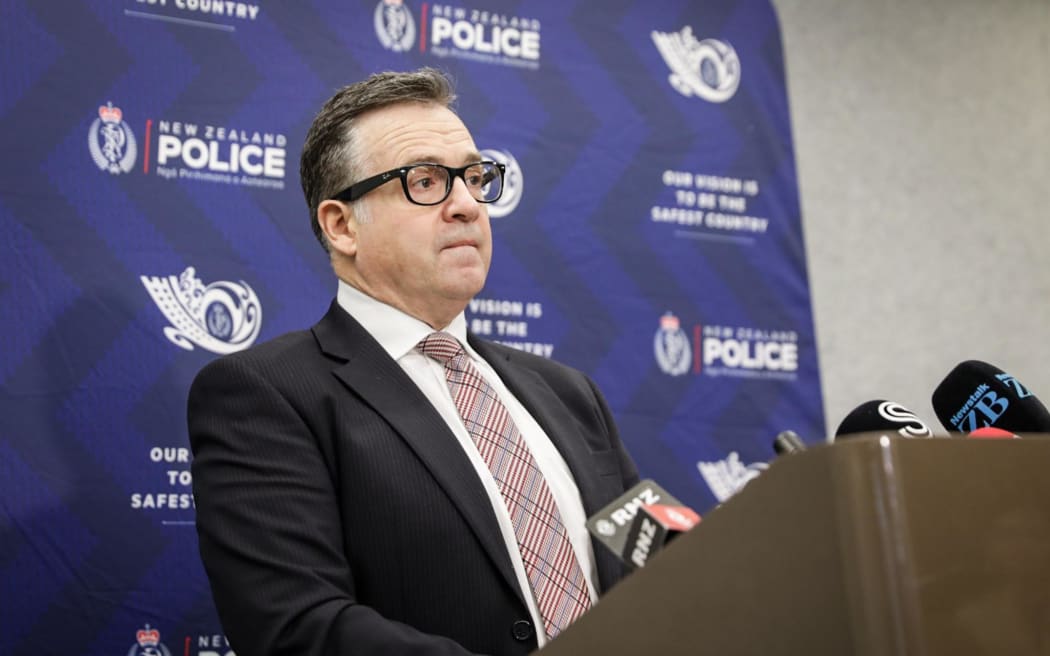
Detective Superintendent Darryl Sweeney. Photo: RNZ / Nate McKinnon
The court was played a radio transmission of when police staff became aware of the terrorist's livestream and were watching it in the District Command Centre.
At the same time, police were at Al Noor Mosque and the terrorist had been arrested.
Not realising the feed was delayed, Sweeney spoke over the police radio, telling staff on the ground what he was seeing, believing an offender was heading back to Al Noor Mosque.
Over the radio, he called all staff back to the mosque.
It was soon realised that it was a delayed feed and there was no secondary threat to the mosque.
Sweeney said the fact that the terrorist had told the officer's who arrested him that there were "up to 10" other armed offenders in the region contributed to his distress call over the radio.
He did not have an exact description of the offender at the time, so did not know if it was him or another offender.
He said he had reflected on his actions but it was possible he would have still acted the same way given the information he had at the time.
"I would have liked to do it better, but I think if it came to me again, because it could be live, you'd go again, yep."
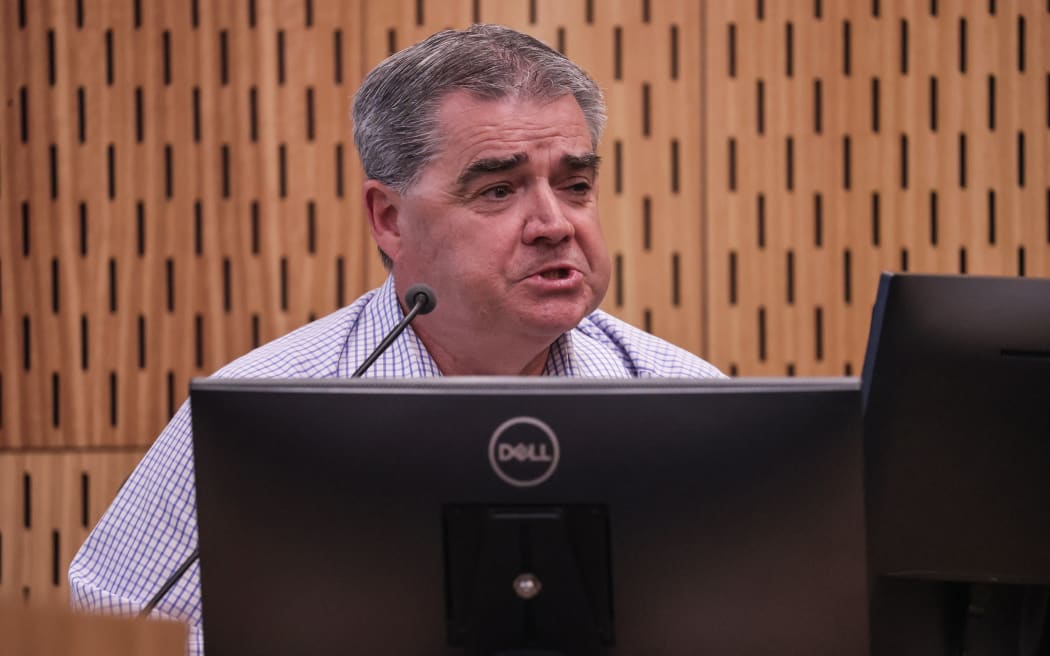
Senior police communicator Bret Watkins. Photo: POOL / STUFF / CHRIS SKELTON
Senior staffer admits priority of 111 call about Christchurch attack should have been upgraded
Bret Watkins, team leader in the Police Southern Communications Centre at the time of the attack, gave evidence earlier on Monday.
He ultimately agreed the first 111 call, which came from parliamentary services about the terrorist's manifesto, should have been upgraded to a "priority 1" call.
The call-taker and her supervising mentor last week told the inquest they believed the parliamentary staffer's call was appropriately labelled a national security event and given the "priority 2" coding.
The sheer volume of priority 1 firearms events that came into the centre following that call flooded the system and the staffer's call was never acted on.
In his evidence, Watkins told the court that the first event he was aware of in relation to the attack on 15 March was a firearms offence, and he quickly realised it was an active shooter situation.
While dealing with that and co-ordinating the response, Watkins said the call-taker's supervisor approached him and told him about the parliamentary staffer's call.
He recalled the supervisor telling him there was going to be a shooting at a mosque - to which he replied: "It's already happening."
Watkins said he could not recall the mentor ever mentioning Linwood mosque or an Ashburton mosque as being targets.
He asked her to get the email sent to him.
Watkins then quickly scanned it and forwarded it to another police staff member to search through and that was the last action he took in relation to it that day.
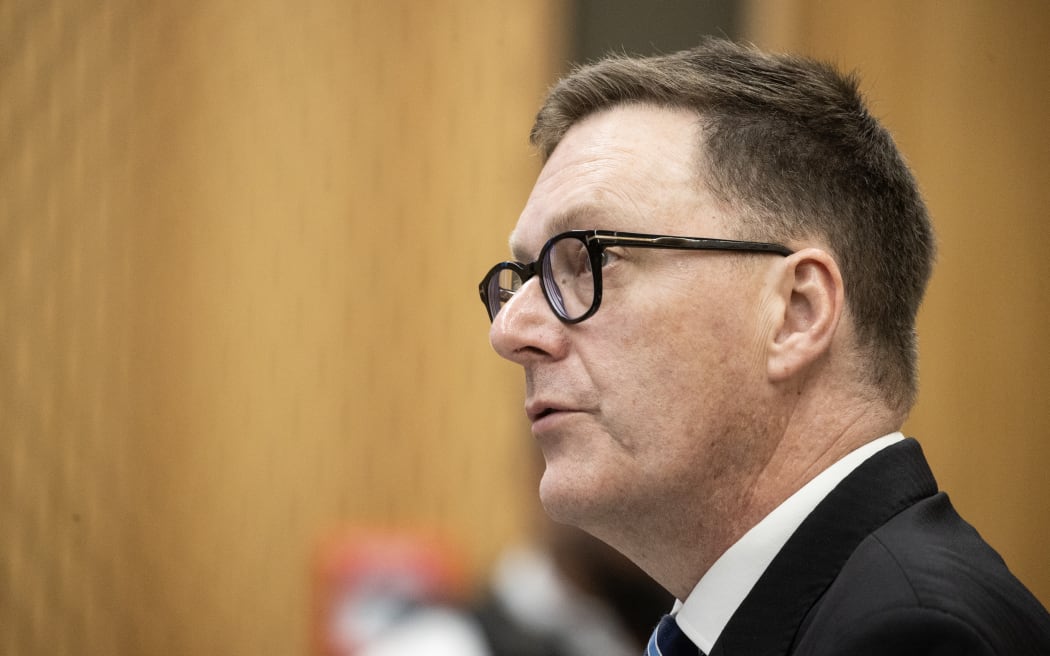
Counsel assisting the coroner David Boldt. Photo: Pool / George Heard
Under cross-examination by counsel assisting the coroner David Boldt, Watkins said he should have acted on the parliamentary staffer's call after the supervisor told him about it and upgraded it to a priority 1 call.
That way, staff he had tasked to read through all event chronologies to find any important information would have seen the entries the call-taker had put in including "Linwood mosque is potential danger".
He agreed that information was vital and as Boldt put it, should have been "shouted from the rooftops".
Watkins admitted: "Due to the number of P1 events we were reading, that information was overlooked."
Earlier evidence from police dispatcher Dara Taylor showed that only one message on the police Intercad system was sent through to St John Ambulance, as it was more efficient to physically run messages between police and St John communications staff as they worked from the same location.
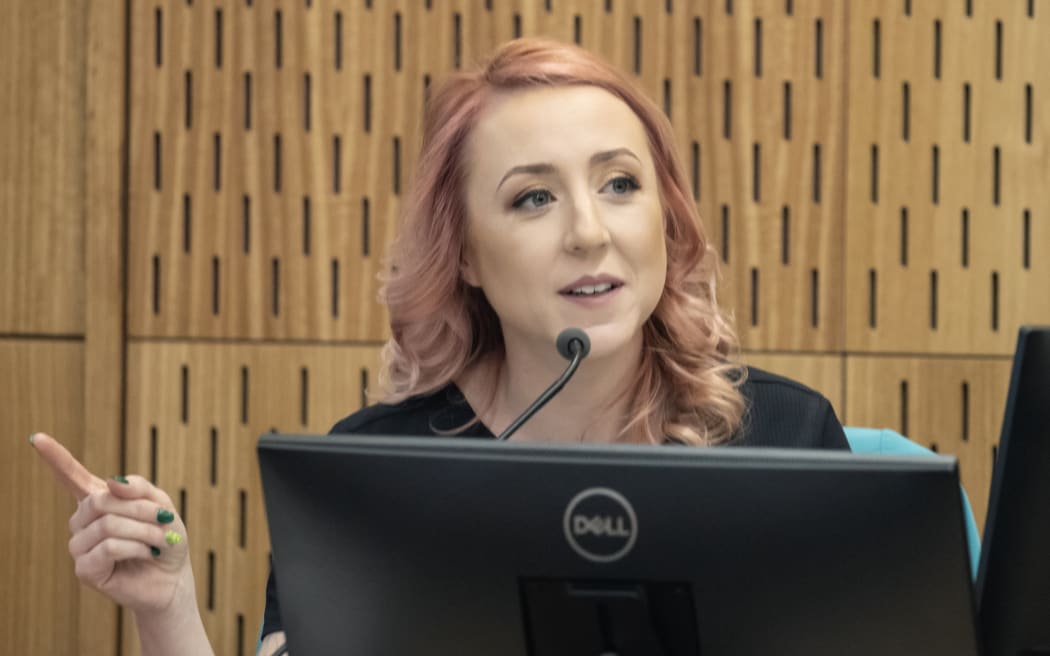
Police dispatcher Dara Taylor. Photo: Iain McGregor
There had been "frustration" about the systems not working well with each other and believed funding was needed so St John could be upgraded to a better system, Taylor told the inquest.
Watkins said some upgrades had happened since, and the police and St John systems do now work better, but he still had recommendations of his own.
The computer system the communications centre used was nearly 30 years old, at the end of its life, and due for replacement, he said.
Being able to see multiple events at the same time on the screen - in real-time - would help staff see event updates quicker, Watkins said.
Overseas jurisdictions used AI to assist communicators and it could also be useful in New Zealand, he said.
It could help assess risk and what priority 111 calls should receive.
The inquest will examine the following 10 issues over six weeks:
- The events of 15 March 2019 from the commencement of the attack until the terrorist's formal interview by police
- The response times and entry processes of police and ambulance officers at each mosque
- The triage and medical response at each mosque
- The steps that were taken to apprehend the offender
- The role of, and processes undertaken by, Christchurch Hospital in responding to the attack
- Co-ordination between emergency services and first responders
- Whether the terrorist had any direct assistance from any other person on 15 March 2019
- If raised by immediate family, and to the extent it can be ascertained, the final movements and time of death for each of the deceased
- The cause of death for each of the victims and whether any deaths could have been avoided
- Whether Al Noor Mosque emergency exit door in the south-east corner of the main prayer room failed to function during the attack and, if so, why?
The inquest continues.

